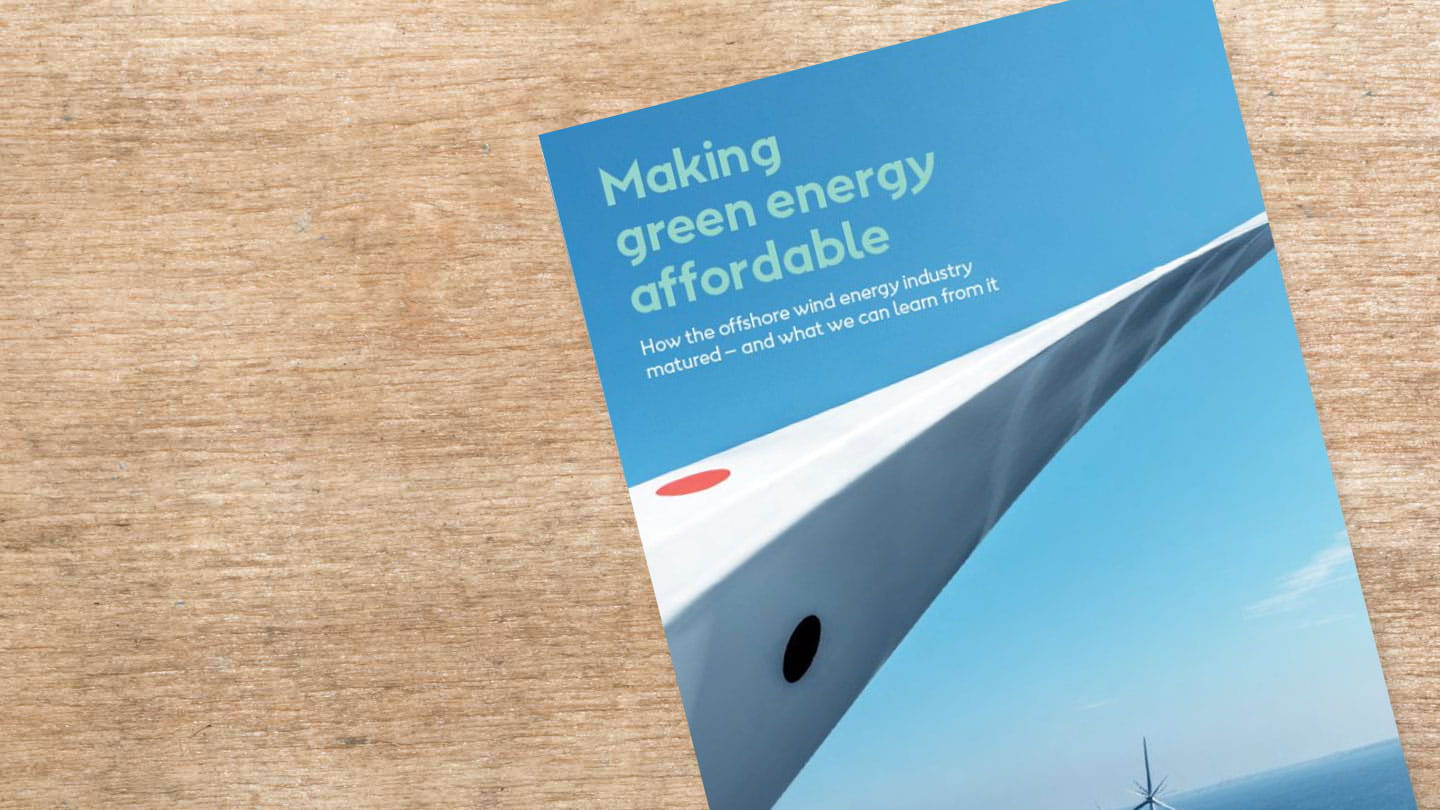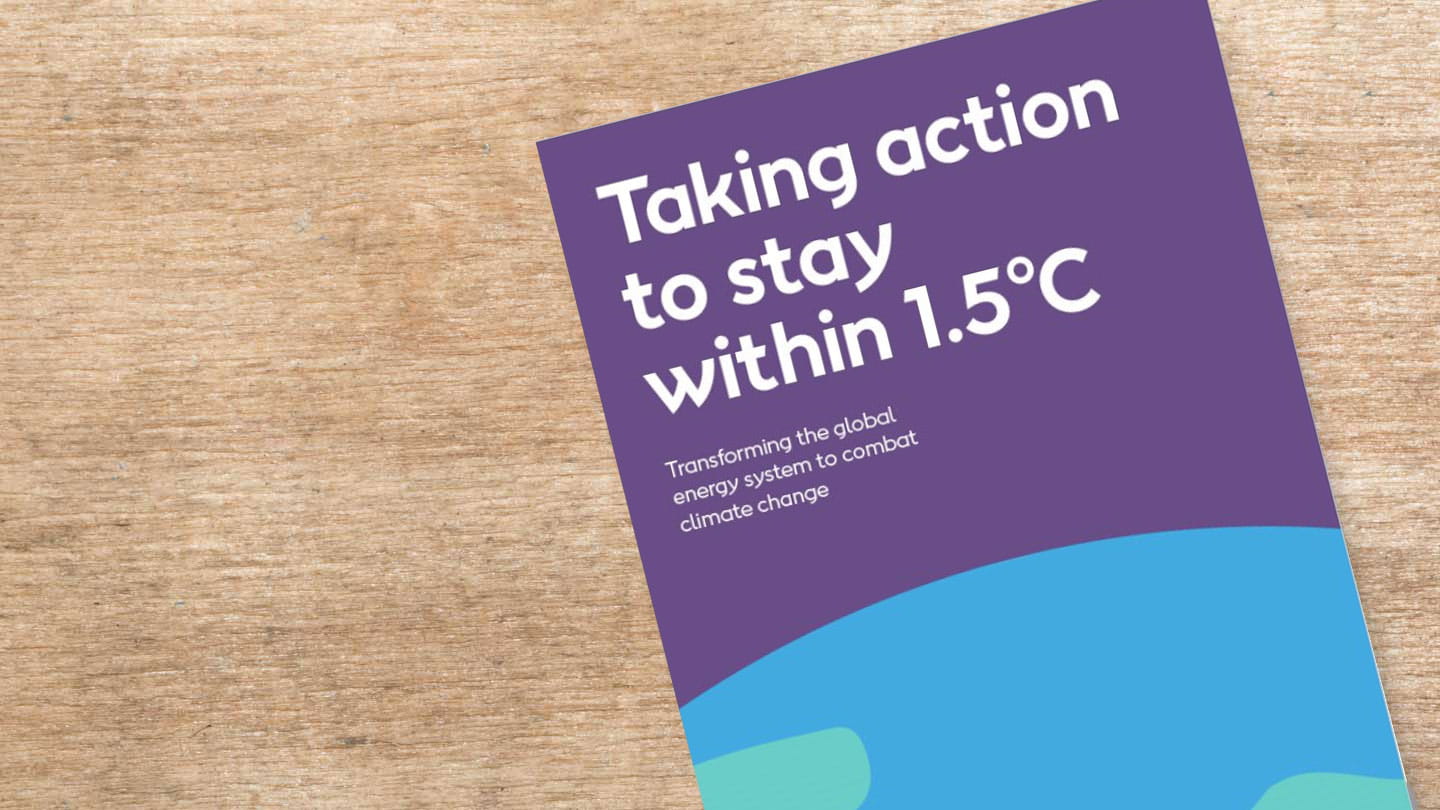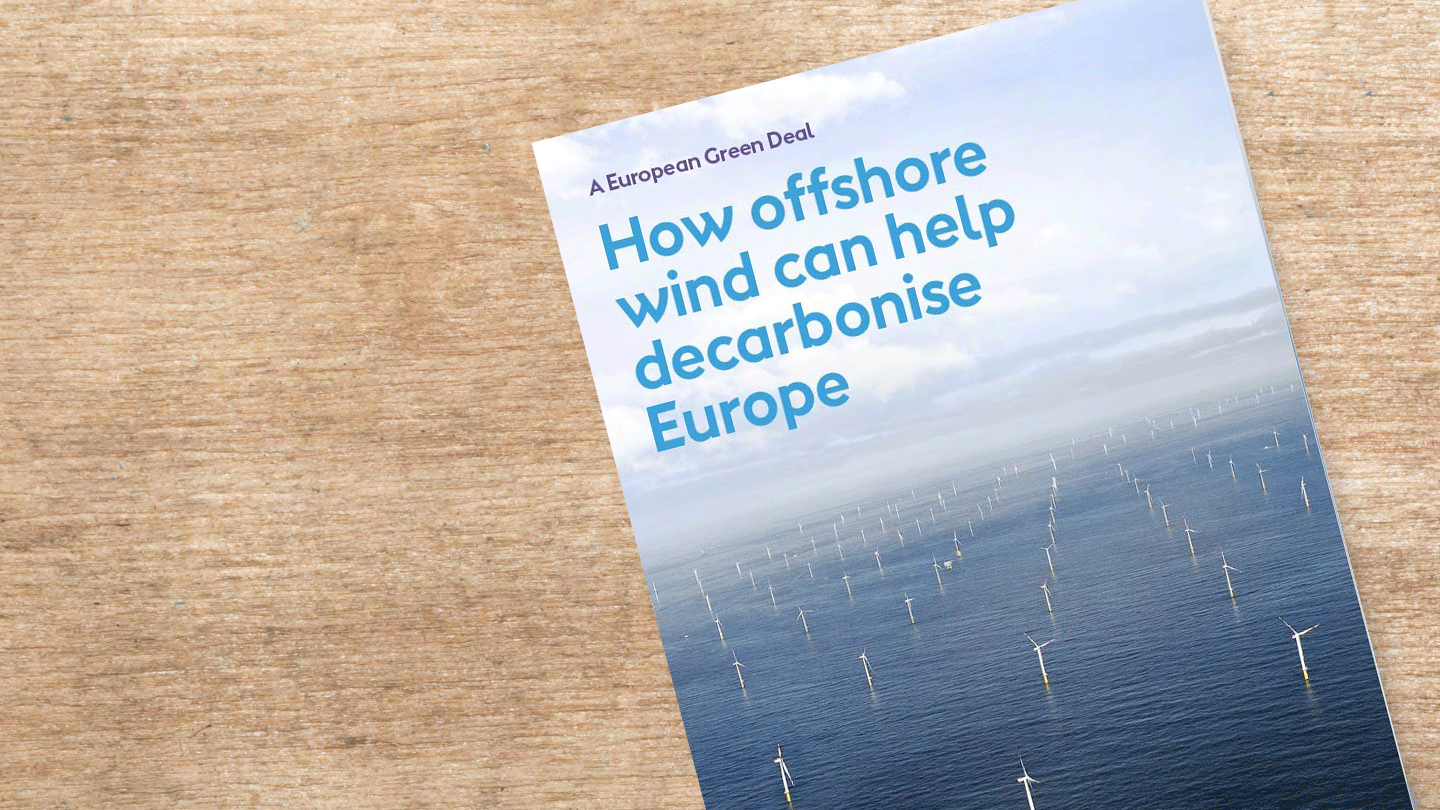 Download Download |
Read the white paper online
Europe sits on one of the world’s best offshore wind resources in the North Seas. Here, wind speeds are high, relatively constant and the waters are shallow, providing good conditions for bottom fixed foundations.
How the North Seas can lead the change
For decades, the North Sea has provided Europe with oil and gas. This lowered our dependence on imported oil and created jobs and economic growth. This era is coming to an end. However, the North Seas can continue to be a major power hub for Europe, now by providing green energy.
A 2017 study of the space utilisation, technology costs and seabed and wind conditions in the North Seas concludes that by 2030, offshore wind in the North Seas could supply approximately 80% of Europe’s existing electricity demand at a maximum cost of EUR 65 per MWh. In total, this would entail 607GW of offshore wind power in the North Seas, of which around one seventh is in the Baltic Sea, two sevenths in the Atlantic Ocean and the rest in the North Sea. This is the economically viable potential. Today, less than 4% of this potential is utilised.
Though it’s gradually changing its power mix, Europe still relies on coal for a large share of its electricity. Today, coal, gas and nuclear power makes up 23%, 23% and 22% of European electricity generation, respectively. By 2030 this will fall to 14%, 18% and 22% under current policies. A lot of coal or lignite fired power plants will have to be replaced by renewables, if Europe is to have any chance of meeting its existing CO2 targets.
Offshore wind can replace a large part of coal-based generation. In fact, the total potential for economically viable wind in North Seas can supply energy equalling the maximum production of all existing coal-fired power plants in Europe – two times over. How much of the potential we can realise will ultimately depend on the transmission grid, the regulatory framework and market conditions. As for solar and onshore wind, a grid is required to transmit the offshore wind power to consumers across the continent. Nonetheless, the potential of offshore wind is enormous.
The Dream has become reality
Since 2007, Europe has pursued its stated ambition to transform itself into a low carbon economy. The EU’s greenhouse gas emissions were to be reduced by 80-95% by 2050, compared to 1990. The Paris Agreement will require even more ambitious targets.
Change is happening. The share of green energy in Europe has increased from 11% in 2007 to 17% in 2016. This development is driven primarily by changes in the European power sector. In 2016, for instance, 86% of new generation capacity installed in Europe was renewable.
Even so, carbon reductions are not happening fast enough in the power sector. In 2016, for instance, almost half of European power production came from fossil assets. In other sectors such as transport, industry and buildings, respectively making up 34, 18 and 16% of energy related emissions in Europe, change is even slower. With the current pace, it will prove difficult to reach the EU’s carbon reduction target for 2050.
However, in recent years, something remarkable has happened in Europe, which has implications for the whole world: new-built green energy became cheaper than newbuilt black energy. For the first time in history, utility scale wind and solar power can outcompete coal and natural gas in power generation across many European countries.
Wind and solar energy have become less expensive as a result of large scale deployment and as a result of a period of great political push for renewables. Renewable energy targets and economic support from governments have provided the necessary scale and clarity on buildout ambitions. This allowed the green energy industry to take up the challenge, to invest, invent and bring down costs.
This also goes for offshore wind, a technology which until a few years ago was largely unknown or regarded as rather exotic and costly by policy makers and the public.
But the unprecedented recent cost reductions have changed all that. In 2012, the industry promised to drive costs for contracted wind farms below EUR 100 per MWh before 2020. This goal was reached and surpassed well ahead of time – costs of energy actually dropped to EUR 65 per MWh in just six years.
|
 Download
Download

